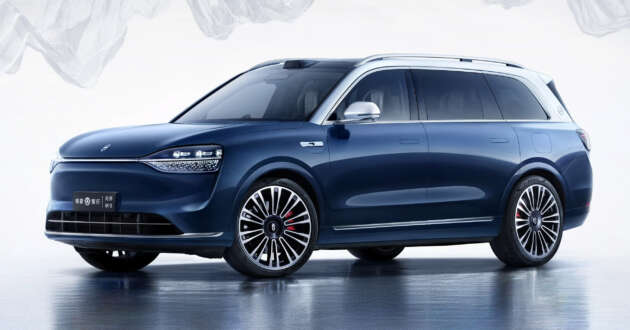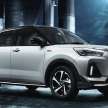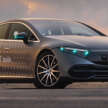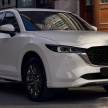Huawei has launched the Aito M9 in China as its flagship SUV that will take on big names like the BMW X7 and Mercedes-Benz GLS. As a brief recap, Aito is a joint venture brand involving Huawei and Seres,...
Huawei has launched the Aito M9 in China as its flagship SUV that will take on big names like the BMW X7 and Mercedes-Benz GLS. As a brief recap, Aito is a joint venture brand involving Huawei and Seres, with the latter being responsible for vehicle manufacturing while the former supplies major parts and software.
The M9 is the latest to join the Aito line-up, with other models being the M5 and M7. In addition to the two German SUVs mentioned above, the M9 will also compete against locals like the Li Auto L9, Nio ES8, HiPhi X and Hongqi E-HS9.
Vehicles in this class are large, and with a length of 5,230 mm, width of 1,999 mm, height of 1,800 and wheelbase of 3,110 mm, the M9 has the presence to be in the same arena. The design is reminiscent of the Luxeed S7, which is another joint venture product involving Huawei and Chery.
Smooth surfacing and rounded edges are apparent across the M9’s body, along with retractable door handles, triangular-shaped headlamps connected by a light bar, pixel-like taillights as well as sizeable (for an EV) overhangs. You’ll also notice a ‘HIMA’ logo on the D-pillars, which is in reference to the Harmony Intelligent Mobility Alliance, a collaboration initiative by Huawei – the members include Aito, Luxeed, BAIC Motor and JAC Motors.


In terms of pricing, the M9 starts at 469,800 yuan (RM303,474) for the base EREV Max variant, going up to 509,800 yuan (RM329,312) for the EV Max, 529,800 yuan (RM342,231) for the EREV Ultra and 569,800 yuan (RM368,070) for the EV Ultra.
The ‘EREV’ variants come with a range extender in the form of a 1.5 litre four-cylinder petrol engine that acts as a generator for the ternary lithium battery that comes in 42 or 52 kWh energy capacities. The battery powers two electric motors, with the one at the front being rated at 224 PS (221 hp or 165 kW) and 315 Nm of torque, while the rear provides 272 PS (268 hp or 200 kW) and 360 Nm.
This all-wheel drive setup is good for 0-100 km/h time of 4.9 seconds and a top speed of 200 km/h. Aito claims that with a 65-litre fuel tank, the EREV variants can provide a WLTC-rated cruising range of up to 1,210 km (42 kWh battery) or 1,239 km (52 kWh battery). Without relying on the range extender, the fully electric driving range is 190 km (42 kWh battery) or 233 km (52 kWh battery) following the WLTC standard – these range figures are higher with the CLTC standard.
The ’EV’ variants also come with a dual-motor, all-wheel drive setup, although the electric motors have revised outputs. The one at the front is rated at 218 PS (215 hp or 160 kW) and 277 Nm, while the rear motor provides 313 PS (308 hp or 230 kW) and 396 Nm.


The top speed is identical to the EREV variants, although the century sprint time is lower at 4.3 seconds. The EV variants are built on an 800-volt architecture and feature a 100-kWh ternary lithium battery, the latter providing a CLTC-rated range of up to 630 km.
Charging-wise, Aito claims the EREV variants will take five hours to get from 20-90% state of charge (SOC) with a 7-kW AC input, or three hours with an 11-kW AC input. The company didn’t state the DC fast charging capacity, but it says that getting from a 20-80% SOC will take 30 minutes.
As for the EV variants, the AC charging times to get from a 20-90% SOC are 11.7 hours (7 kW) and 7.5 hours (11 kW), while DC fast charging (also without a charging capacity figure) from 30-80% takes just 15 minutes.
All variants of the M9 comes with standard air suspension with an adjustment range of up to 80 mm, 21-inch alloy wheels (22-inchers are optional), an active shutter grille, a panoramic glass roof, soft-close doors (the Ultra versions have powered doors).


There’s also no shortage of technologies, some of which are rather novel and interesting. As a start, the Huawei-developed headlamps come with an adaptive matrix LED system, which is something that is rather common on cars today. What makes them unique is they also feature an integrated projector that can turn any flat surface into a 100-inch display.
As such, the M9 can be used a mobile drive-in movie theatre, and the headlamps can also display lyrics ahead of the vehicle if you happen to be in the mood to “sing K” instead. That’s a pretty good start, but if you prefer to enjoy your movies from inside the car, there’s also a retractable 32-inch screen and an actual laser projector for rear passengers to use.
Elsewhere inside the cabin, there are three displays on the dashboard, including a 12.3-inch digital instrument cluster, a 15.6-inch central infotainment touchscreen and a 16-inch front passenger touchscreen. For the driver, there’s a 75-inch head-up display with augmented reality (UItra variants), while each of the four rear passengers get their own tablet-style touchscreens.
Huawei’s HarmonyOS 4 is the core of the infotainment experience, which is further augmented by its 25-speaker, 2,080-watt audio system that not only adapts audio playback to where passengers are seated, but also supports the vehicle’s active noise cancellation feature. To make things even more immersive, the ambient lighting system can be synced to the music being played.



Other features include three-zone climate control with an air quality sensor, PM2.5 monitoring, a negative ion generator, a N95 cabin filter, UV sterilisation and fragrance delivery; two wireless charging pads; ultra-wideband key; NFC card key; vehicle-to-load (V2L) and vehicle-to-vehicle (V2V) power delivery as well as user face recognition.
Aito also adds that the sound system can create a “privacy sound shield” in the second row so you can have that important business call without your chauffer eavesdropping. On that mention, we should mention that the M9 is strictly a six-seater with a 2-2-2 layout, but the second-row seat behind the front passenger can be set in a lounge mode.
With this, the front passenger seat will tilt and fold forwards, providing the person seated behind it to recline and stretch out fully. The company touts various seat configurations that are available, including one where a “bed” is formed across the first two rows (check out the gallery). All seats are upholstered in Nappa leather and come with heating and ventilation functions – the front two seats gain an additional massage function.
On the safety and driver assistance front, the M9 is equipped with Huawei’s ADS 2.0 system that is supported by a suite of sensors: one LiDAR, three millimetre wave radars, 12 ultrasonic radars and several cameras. These enable functions such as autonomous emergency braking, blind spot monitoring, rear cross traffic alert, adaptive cruise control, lane keep assist, smart assisted parking and semi-autonomous driving.






























































The post Huawei Aito M9 launched in China – flagship three-row SUV; REEV range up to 1,210 km, EV range 630 km appeared first on Paul Tan's Automotive News.













